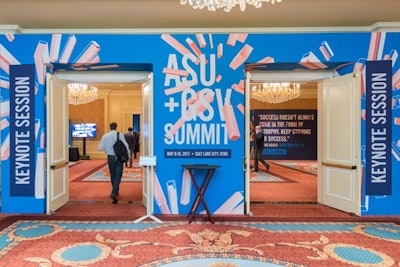
AgencyEA created a new look for this year’s event to match GSV’s new branding. The design carried through signage, communication materials, the mobile app, and staging.
Photo: Courtesy of AgencyEA
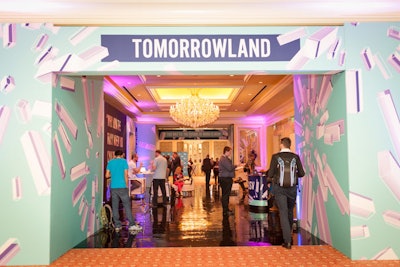
A freestanding frame wrapped with tension fabric created a colorful entrance to the Tomorrowland area.
Photo: Courtesy of AgencyEA
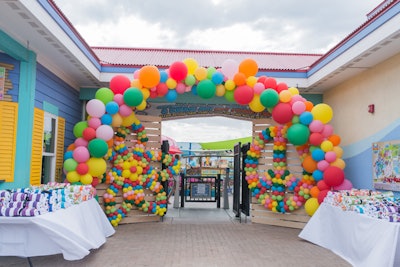
A festive opening party at Cowabunga Bay Water Park on July 19 enforced the idea that this was not a typical conference. Balloon designs from Balloon Bonanza formed a peace sign, a flower, and an entry arch.
Photo: McKenzie Deakins
White Hot Night in Miami Beach Opening-Night Party
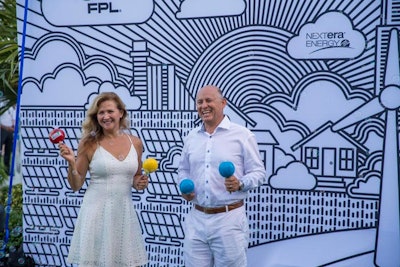
Florida Power & Light also provided a branded photo booth.
Photo: World Red Eye
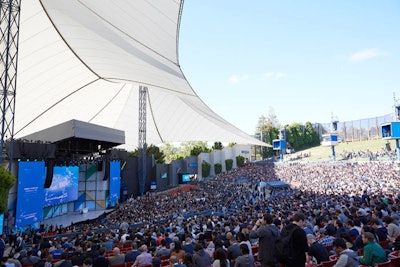
The amphitheater housed the keynotes and large breakout sessions. The rest of the conference took place in structures set up in the venue's parking lot.
Photo: Courtesy of Google
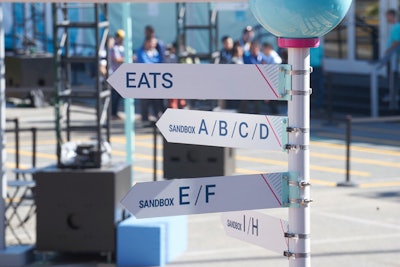
Based on feedback from the 2016 event, organizers added more wayfinding tools, such as signposts and maps.
Photo: Courtesy of Google
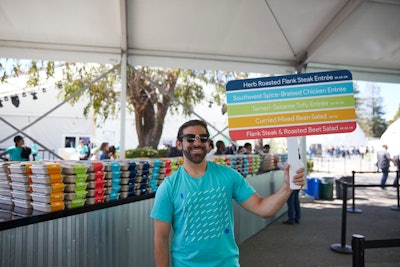
To improve the flow of attendees through the food area, staff held color-coded menu signs that corresponded to the colors on the packaged food. Matuk said the system worked well and allowed 7,200 people to be fed in 45 minutes.
Photo: Courtesy of Google
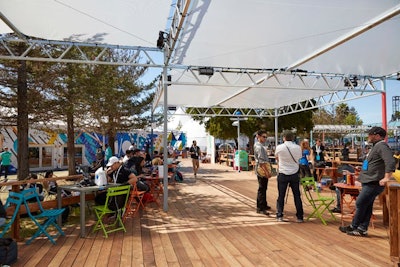
After dealing with extreme heat in 2016, this year organizers created 30,000 square feet of shaded areas outside the session structures.
Photo: Courtesy of Google
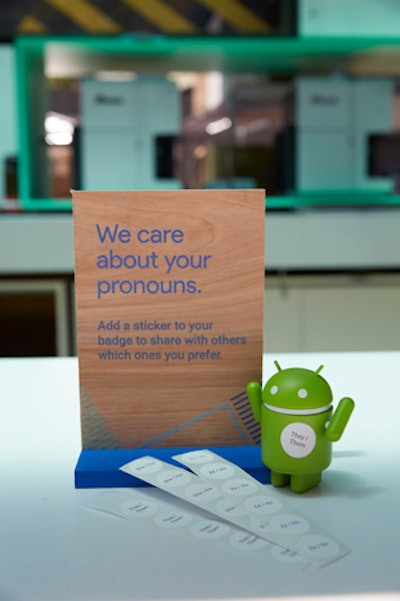
To foster inclusivity, Google invited attendees to add stickers to their badges to indicate which pronouns they prefer to describe themselves.
Photo: Courtesy of Google
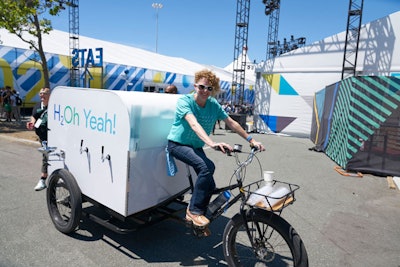
Six cyclists pulled mobile water-filling stations around the event, targeting areas where attendees gathered.
Photo: Courtesy of Google
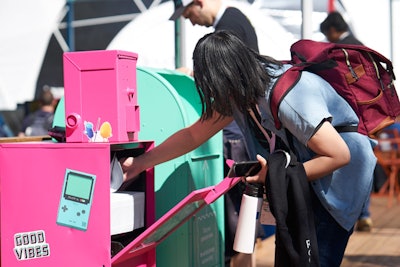
Organizers provided pre-stamped postcards and invited attendees to write a note to a colleague, friend, or family member and drop it into one of the mailboxes located around the event. Matuk said the purpose was to create a “nice human, analog moment in a digital, tech-forward environment.”
Photo: Courtesy of Google
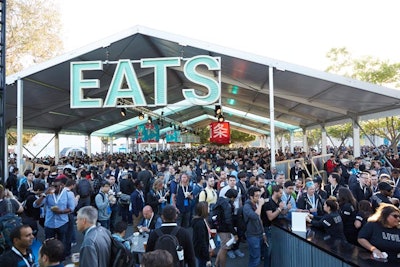
This year organizers created the “Eats Market,” a large pavilion where they served lunch each day. Matuk said this worked much better than their system in 2016 when they had 15 food stations spread through the event.
Photo: Courtesy of Google
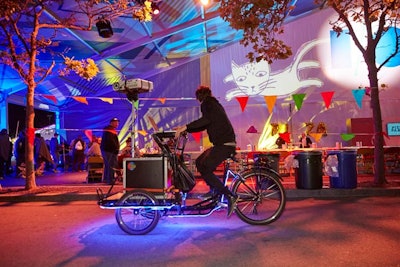
The large tents that housed sessions during the day became canvases for pop-up artwork during the opening night Block Party. Cyclists with projectors mounted on their bikes would stop to show a scene or short film on the side of the tent.
Photo: Courtesy of Google
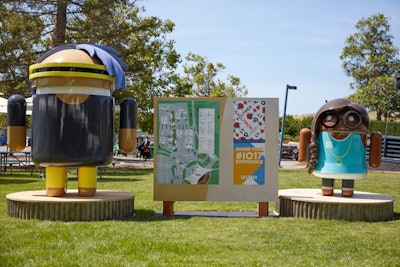
Organizers prominently displayed large "you are here"-style maps throughout the venue. The back of each map was a community billboard where they posted updates about sessions and after-hours events.
Photo: Courtesy of Google
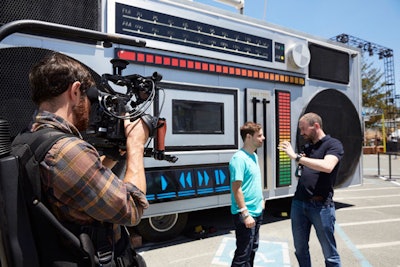
Four “live guides” traveled around the event with a camera person to provide content for the online audience. The majority of the content was pre-selected by Google, but some was based on questions and requests submitted via social channels.
Photo: Courtesy of Google
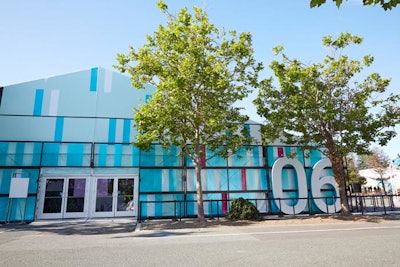
The colorful tents from 2016 returned, but this year organizers numbered them to aid with wayfinding.
Photo: Courtesy of Google
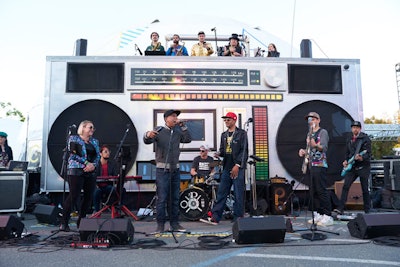
A massive boombox served as the backdrop for a hip-hop band and DJ at the Block Party on the first night of the conference. The event included additional entertainment, an arcade, a virtual-reality movie experience, food, and more.
Photo: Courtesy of Google
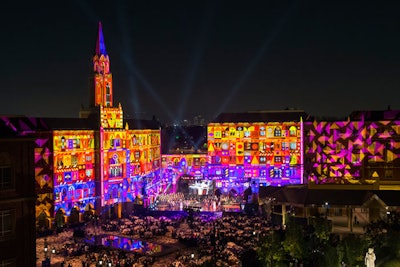
For the opening of the USC Village complex in Los Angeles in October, Bart Kresa Studio mapped two buildings on the main piazza, as well as the 150-foot-tall clock tower. The five-minute projection-mapping feature was set to a song by Leonard Bernstein that was performed by the university’s full orchestra and choir.
Photo: Gabor Ekecs
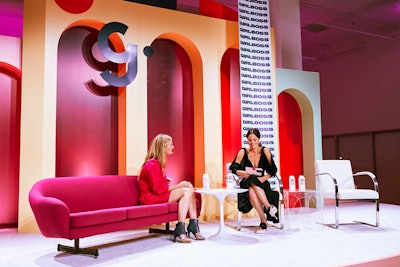
Speakers on the main stage included Gwenyth Paltrow (left) and Girlboss founder Sophia Amoruso (right).
Photo: Chris Swoszowski



















